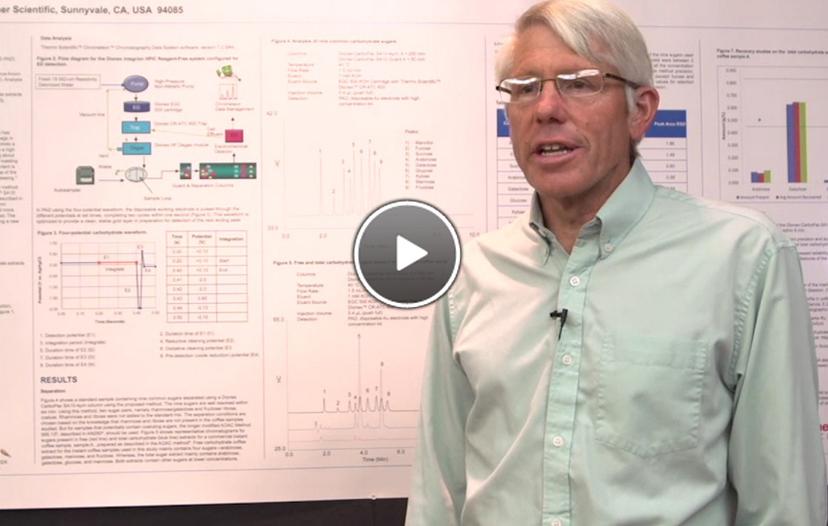Revolutionizing the Quest for the Perfect Cup of Coffee
Discover the innovations which have led to an improved method of sugar analysis
28 Dec 2016

Jeffrey Rohrer, Ph.D presents a new, faster method for carbohydrate analysis at AOAC 2016
At AOAC 2016 in Dallas, Texas, Jeffrey Rohrer, Ph.D, the Director of Applications Development at Thermo Fisher Scientific, presented a poster entitled ‘A Fast Method for Sugar Analysis for Instant Coffee Samples’. The poster, produced by his colleague Dr Sachin Patil, describes a new high-performance ion exchange chromatography column which can analyze sugars more than ten times quicker than the current AOAC method. In an interview with SelectScience®, Dr Rohrer explains how this upgraded column can be combined with a new system to increase the efficiency of carbohydrate analysis.
Dr Rohrer begins by explaining that carbohydrates in coffee are one of the major dictators of the flavor profile. Therefore, determination of the sugars in coffee samples, including instant coffee and green coffee, is a good method to assess the quality of the product.
He goes on to describe how the current AOAC method for determination of carbohydrates in coffee, which was first developed in 1995, is still used worldwide today. However, this method has the major drawback of being very time consuming as the analysis can take up to 70 minutes.
The new column, the Thermo Scientific™ Dionex™ CarboPac™ SA10, can be used to carry out the same analysis in just six minutes. Dr Rohrer describes how the new column can be used in combination with other innovations to save hands-on time. The new column can be used with the Thermo Scientific™ Dionex™ Integrion™ HPIC™ System, which allows online creation of the mobile phase. Another advantage of the new method is the use of pulsed amperometric detection, meaning the sugars do not need to be derivatized.
In conclusion, the combination of new technologies from Thermo Fisher Scientific have allowed the development of a method that is much more efficient. Ultimately, this method will make it easier than ever before for beverage analysts to assess the quality of coffee samples and improve the quality of the product delivered to the consumer.
